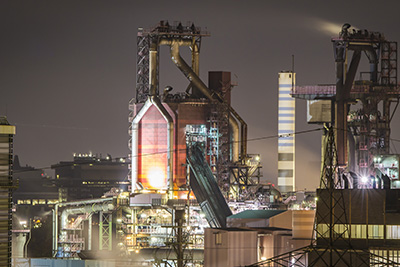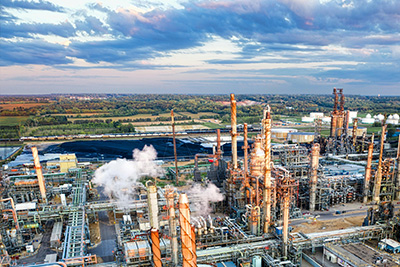-
![Dibutyl Tin Dilaur···]() 2025-01-07 Dibutyl Tin Dilaurate: Essential App···
2025-01-07 Dibutyl Tin Dilaurate: Essential App···Dibutyl tin dilaurate (DBTDL) is widely used in polymer chemistry for its efficient catalytic properties. It plays a crucial role in the synthesis of polyurethanes, where it acts as a catalyst for the reaction between polyols and isocyanates. DBTDL is also utilized in the production of other polymers like PVC, where it functions as a heat stabilizer. Its unique characteristics, such as high thermal stability and low volatility, make it an indispensable component in various industrial applications, ensuring improved product quality and process efficiency.
read more > -
![n-Butyltris(2-ethy···]() 2025-01-07 n-Butyltris(2-ethylhexanoate): Chemi···
2025-01-07 n-Butyltris(2-ethylhexanoate): Chemi···"N-Butyltris(2-ethylhexanoate) is a chemical compound with a unique composition that plays a crucial role in various industrial applications. Its molecular structure consists of a butyl group and three 2-ethylhexanoate ligands, making it suitable for use in specialized coatings, lubricants, and plasticizers. This compound enhances the performance of materials by improving their flexibility, thermal stability, and resistance to chemicals. Due to its distinctive properties, n-butyltris(2-ethylhexanoate) is essential in industries such as automotive, construction, and manufacturing, where high-performance materials are required."
read more > -
![Tetra Butyltin: A ···]() 2025-01-07 Tetra Butyltin: A Comprehensive Over···
2025-01-07 Tetra Butyltin: A Comprehensive Over···Tetra butyltin (TBT) is an organotin compound with diverse applications including biocides in antifouling paints, catalysts in polymer synthesis, and as a stabilizer in plastics. Its benefits lie in its effectiveness at preventing marine organisms from adhering to surfaces, thus reducing maintenance costs for boats and enhancing their efficiency. However, TBT also poses significant environmental and health concerns due to its toxicity, bioaccumulation, and persistence in ecosystems. These issues have led to strict regulations on its use and calls for safer alternatives.
read more > -
![Tri-n-Butyltin Hyd···]() 2025-01-07 Tri-n-Butyltin Hydride: Benefits and···
2025-01-07 Tri-n-Butyltin Hydride: Benefits and···Tri-n-butyltin hydride (TBT-H) is a versatile chemical widely used in the industrial sector due to its unique properties. It serves as an effective radical initiator in polymerization reactions, enhancing product quality and consistency. Additionally, TBT-H plays a crucial role in pharmaceutical synthesis, contributing to the development of new drugs. However, its usage is not without risks. TBT-H poses environmental hazards, including bioaccumulation and toxicity to aquatic life, necessitating careful handling and disposal practices. Occupational exposure can lead to health issues such as skin irritation and respiratory problems. Therefore, while TBT-H offers significant benefits in chemical industries, stringent safety measures and regulations are essential to mitigate associated risks.
read more > -
![The Role of O-Isop···]() 2025-01-07 The Role of O-Isopropyl Ethylthiocar···
2025-01-07 The Role of O-Isopropyl Ethylthiocar···O-Isopropyl ethylthiocarbamate plays a significant role in various industrial processes, particularly in chemical manufacturing. This compound is primarily used as a key intermediate in the production of thiurams and thiazoles, which are essential additives in rubber vulcanization. Additionally, it serves as an effective retarder in the polymerization of vinyl chloride, enhancing control over reaction rates. Its unique chemical properties make it indispensable for improving the efficiency and quality of these manufacturing processes.
read more > -
![Dimethyltin Dichlo···]() 2025-01-07 Dimethyltin Dichloride: Chemical Pro···
2025-01-07 Dimethyltin Dichloride: Chemical Pro···Dimethyltin dichloride (DMTC) is a chemical compound with the formula (CH3)2SnCl2. It appears as a colorless to white crystalline solid and is primarily used in the production of other tin compounds. DMTC is toxic and can cause skin and eye irritation, as well as harm if inhaled or ingested. Proper safety measures include wearing protective gear such as gloves, goggles, and masks, and ensuring adequate ventilation in work areas. Storage should be in a cool, dry place away from incompatible materials. Immediate medical attention is required in case of exposure to prevent serious health issues.
read more > -
![Understanding 2-Et···]() 2025-01-07 Understanding 2-Ethylhexyl Thioglyco···
2025-01-07 Understanding 2-Ethylhexyl Thioglyco···2-Ethylhexyl thioglycolate (EHTG) is a versatile chemical compound with a wide range of industrial applications. Primarily used as a stabilizer in plastic manufacturing, it helps prevent degradation due to heat and light exposure. Additionally, EHTG serves as a catalyst in various chemical reactions, enhancing the efficiency of processes such as polymerization. It is also employed in the production of lubricants, where it improves friction-reducing properties. In the cosmetics industry, EHTG acts as a chelating agent, binding metal ions that can cause instability in formulations. Its unique properties make it an essential component in numerous industrial sectors, contributing significantly to product quality and performance.
read more > -
![N-Butyltris(2-Ethy···]() 2025-01-04 N-Butyltris(2-Ethylhexanoate): A Gre···
2025-01-04 N-Butyltris(2-Ethylhexanoate): A Gre···"N-Butyltris(2-Ethylhexanoate) is presented as an environmentally friendly alternative for industrial lubricants. This green solution offers improved performance and reduced ecological impact compared to traditional lubricants. Experts highlight its biodegradability and lower toxicity, making it a promising choice for industries aiming to reduce their environmental footprint."
read more > -
![Applications of Te···]() 2025-01-04 Applications of Tetra Butyltin in Po···
2025-01-04 Applications of Tetra Butyltin in Po···The article explores the utilization of tetra butyltin across various polymerization reactions, presenting it as a crucial industrial catalyst. It details its applications in enhancing reaction rates and controlling molecular weights, thereby improving the efficiency and versatility of polymer production processes. The guide also discusses optimal conditions for its use, safety measures, and environmental considerations, making it an essential resource for professionals in chemical engineering and materials science.
read more >









